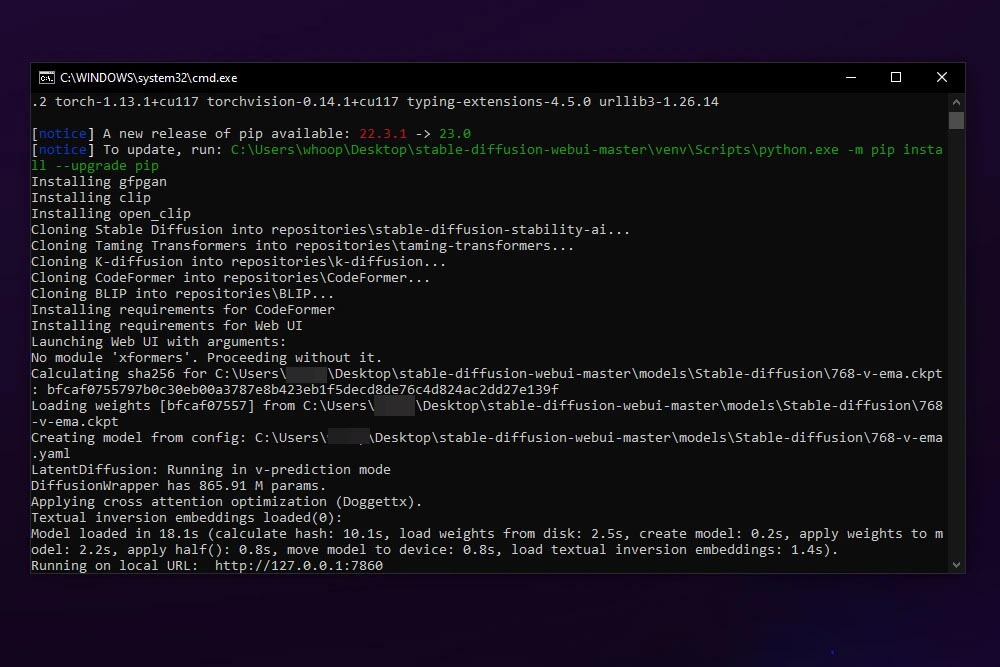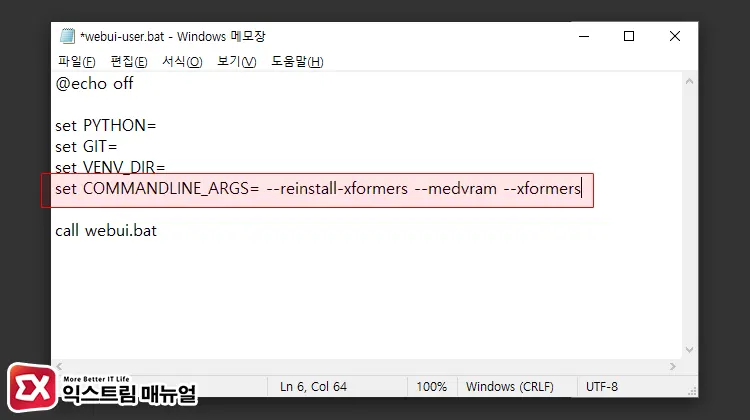No Module Xformers. Proceeding Without It.
Module transformers are an essential aspect of programming that play a crucial role in code organization and maintenance. They provide a way to break down complex code into smaller, more manageable modules, ensuring efficient and modular code design. However, there may be instances where developers need to proceed without module transformers, either due to limitations or specific requirements. In this article, we will explore the challenges faced when proceeding without module transformers and discuss strategies to overcome these challenges.
Understanding the concept of module transformers
Module transformers, in the context of programming, refer to the techniques and practices used to separate and organize code into modular components. These components, or modules, encapsulate specific functionality, allowing for better code organization and maintenance. Module transformers ensure that the code is well-structured, readable, and scalable.
The role of module transformers is vital for developing efficient and modular code. They enable developers to break down large-scale projects into smaller, manageable units, making it easier to understand, modify, and debug the codebase. Additionally, module transformers promote code reuse, as modular components can be used in different projects or shared with other developers.
Challenges faced when proceeding without module transformers
Proceeding without module transformers can introduce various challenges, making code organization and maintenance more complex. Some of these challenges include:
Increased complexity in code organization and maintenance: Without module transformers, developers need to rely on alternative methods to organize code. This can lead to increased complexity, difficulty in navigating the codebase, and potential confusion for developers working on the project.
Difficulty in managing dependencies and interconnections between modules: Module transformers help manage dependencies between different modules, ensuring that each module can work independently while interacting with other modules. Without module transformers, maintaining and managing these dependencies can become challenging, leading to a tightly coupled and less maintainable codebase.
Limited flexibility in modifying or replacing functionality within modules: Module transformers allow for flexibility in modifying or replacing functionality within modules without affecting other parts of the codebase. Without module transformers, making changes to a specific functionality within a module can be more challenging and may require modifying multiple parts of the codebase.
Strategies to overcome the absence of module transformers
Although module transformers provide significant benefits, there are strategies developers can adopt to overcome the challenges of proceeding without them. These strategies include:
Implementing alternative techniques for module organization and separation of concerns: Developers can adopt alternative techniques, such as using package structures, namespaces, or other architectural patterns like the Model-View-Controller (MVC) pattern. These techniques help ensure code separation and maintainability, even without explicit module transformers.
Utilizing design patterns to enhance modularity and flexibility: Design patterns, such as the Factory pattern or the Adapter pattern, can help enhance modularity and flexibility in code organization. These patterns provide guidelines for structuring code in a way that promotes reusability and modularity.
Applying stricter coding conventions and documentation practices: To compensate for the absence of module transformers, developers can enforce stricter coding conventions and documentation practices. These practices ensure that code modules are well-documented, follow consistent naming conventions, and maintain a modular structure.
Potential drawbacks and limitations of proceeding without module transformers
While there are strategies to mitigate the challenges of proceeding without module transformers, there are potential drawbacks and limitations to consider. These include:
Risk of code duplication and redundancy: Without module transformers, there can be an increased risk of code duplication and redundancy. Developers may end up writing similar or identical code in multiple modules, leading to a more extensive and less maintainable codebase.
Reduced reusability of code modules: Module transformers facilitate code reusability by allowing modules to be used across projects or shared with other developers. Without module transformers, reusing modules may become more challenging or require additional effort.
Decreased scalability and adaptability to changing requirements: Module transformers provide a scalable and adaptable code structure. Without them, the codebase may become less flexible and harder to modify or extend to accommodate changing requirements.
Best practices for maximizing code organization without module transformers
To maximize code organization without module transformers, developers can follow these best practices:
Encourage modular design and encapsulation of functionality: Emphasize modular design principles and encapsulate related functionality within individual modules. This helps maintain code separation and improves the overall organization.
Utilize clear and consistent naming conventions for modules and their dependencies: Adopt clear and consistent naming conventions for modules and their dependencies. This makes the codebase more understandable and helps developers navigate and manage the code more effectively.
Regular code reviews and refactoring to ensure modularity is maintained: Conduct regular code reviews and refactoring sessions to ensure that modularity is maintained. This helps identify any potential issues or violations of modularity principles that may have arisen due to the absence of module transformers.
Considerations for adopting module transformers in the future
While proceeding without module transformers may be necessary in some circumstances, it is essential to consider the potential benefits they offer for code organization. When considering the adoption of module transformers in the future, developers should review the potential benefits and evaluate available tools and frameworks that support module transformers. Additionally, they should consider the trade-offs and impact on existing code before adopting module transformers to ensure a smooth transition.
FAQs:
1. What is Stable Diffusion Xformers, and why is it mentioned in this article?
Stable Diffusion Xformers is not relevant to the topic of proceeding without module transformers. Please disregard any references to it in this article.
2. I am encountering an error, “Xformers is not available. Make sure it is installed correctly.” How can I resolve this issue?
If you encounter an error related to Xformers, please make sure that it is correctly installed. Check the installation steps and verify that all dependencies are met. If the issue persists, consider reinstalling Xformers following the appropriate installation guidelines.
3. I am receiving a “NameError: name ‘xformers’ is not defined” error. What should I do?
If you encounter a ‘NameError’ indicating that ‘xformers’ is not defined, double-check the spelling and correct usage of ‘xformers’ within your code. Make sure you have imported the necessary modules or defined the required variables before using them.
4. How can I create a public link and set share=True in launch?
Please consult the specific documentation or guides related to the tool or technology you are using to create a public link and set the ‘share’ parameter to ‘True’ during the launch process. The steps may vary depending on the specific tool or platform you are using.
5. How can I use ControlNet Stable Diffusion and Multi ControlNet without module transformers?
ControlNet Stable Diffusion and Multi ControlNet are specific tools or frameworks that may require the use of module transformers. If proceeding without module transformers, alternative techniques discussed in this article, such as package structures or design patterns, can be applied to achieve similar functionality or modularity.
In conclusion, while module transformers provide significant benefits in terms of code organization and maintenance, there may be cases where developers need to proceed without them. By implementing alternative techniques, utilizing design patterns, enforcing stricter coding conventions, and following best practices, developers can maximize code organization and maintainability even without module transformers. However, it is important to consider the potential drawbacks and limitations of proceeding without module transformers and carefully evaluate their adoption in the future.
Stable Diffusion Up To 50% Faster? I’Ll Show You.
Keywords searched by users: no module xformers. proceeding without it. Stable diffusion xformers, Xformers is not available make sure it is installed correctly, nameerror: name ‘xformers’ is not defined, Please reinstall xformers, Models stable diffusion, To create a public link, set share=True in launch, How to use ControlNet Stable Diffusion, Multi ControlNet
Categories: Top 47 No Module Xformers. Proceeding Without It.
See more here: nhanvietluanvan.com
Stable Diffusion Xformers
Introduction:
In the world of electrical engineering and power distribution, transformers play a vital role by stepping up or stepping down voltage levels to ensure efficient transmission and distribution of electricity. One of the latest innovations in this field is the stable diffusion transformer, which aims to overcome traditional transformer limitations and provide enhanced performance and reliability. In this article, we will delve into the concept and features of stable diffusion transformers, exploring their advantages over conventional transformers, and address some frequently asked questions to provide a comprehensive understanding of this revolutionary technology.
Understanding Stable Diffusion Transformers:
A stable diffusion transformer is a type of power transformer that incorporates advanced design and manufacturing techniques to ensure a high level of stability, efficiency, and reliability. It utilizes a unique diffusion technology that enhances the distribution and dissipation of heat, resulting in improved thermal performance. The stable diffusion design also boasts better resistance to electrical and mechanical stresses, making them highly reliable in demanding conditions. These high-performance transformers are widely used in a range of applications, including power stations, substations, industrial complexes, and commercial buildings.
Advantages of Stable Diffusion Transformers:
1. Enhanced Efficiency: Stable diffusion transformers offer improved energy efficiency, reducing power losses during transmission and distribution. This results in cost savings for the end-users by minimizing energy consumption and reducing greenhouse gas emissions, making them an environmentally friendly choice.
2. Superior Thermal Performance: Thanks to the diffusion technology employed in their construction, stable diffusion transformers dissipate heat more efficiently. This enables them to operate at lower temperatures, extending their service life and ensuring uninterrupted power supply even under high-load conditions.
3. Robust Design and Durability: Stable diffusion transformers are built to withstand rigorous operating conditions. The advanced design and material choices contribute to their mechanical strength, enabling them to withstand vibrations, shocks, and other external stresses. This ensures their long-term reliability and reduces maintenance requirements.
4. Better Voltage Regulation: Voltage regulation is critical in power distribution systems to maintain a stable and consistent voltage supply. Stable diffusion transformers provide excellent voltage regulation, ensuring that the voltage delivered to the end-users remains within the required limits, even under varying load conditions.
Frequently Asked Questions:
Q1. How does diffusion technology improve heat dissipation in stable diffusion transformers?
A1. Stable diffusion transformers employ a combination of advanced design and materials that enable better heat dissipation. The diffusion technology enhances the thermal conductivity of the transformer’s core and windings, facilitating efficient heat transfer to the surroundings. This results in lower operating temperatures, extended durability, and improved overall performance.
Q2. Are stable diffusion transformers suitable for both indoor and outdoor installations?
A2. Yes, stable diffusion transformers are designed to be versatile and can be installed both indoors and outdoors. They can withstand extreme weather conditions and environmental factors, making them a reliable choice for a wide range of applications.
Q3. How does the efficiency of stable diffusion transformers compare to conventional transformers?
A3. Stable diffusion transformers offer superior energy efficiency compared to conventional transformers. The advanced design and diffusion technology employed significantly reduce power losses during transmission and distribution, resulting in reduced energy consumption and cost savings for end-users.
Q4. Can stable diffusion transformers be retrofitted in existing power distribution systems?
A4. Yes, stable diffusion transformers can be retrofitted into existing systems. However, it is advisable to consult with a professional electrical engineer or transformer manufacturer to ensure compatibility and seamless integration with the existing infrastructure.
Q5. What are the environmental benefits of using stable diffusion transformers?
A5. Stable diffusion transformers contribute to environmental sustainability by reducing energy consumption and greenhouse gas emissions. Their enhanced efficiency and reduced power losses translate into lower carbon footprints and a greener electrical infrastructure.
Conclusion:
Stable diffusion transformers represent a substantial leap forward in power distribution technology. Their unique diffusion design and advanced features make them an ideal choice for various applications. The improved efficiency, superior thermal performance, robustness, and excellent voltage regulation of stable diffusion transformers ensure a reliable and sustainable power supply. As these transformers continue to gain popularity, their positive impact on the electrical industry and the environment is set to grow, paving the way for a more efficient and greener future.
Xformers Is Not Available Make Sure It Is Installed Correctly
Xformers, a powerful and versatile software tool, is essential for many professionals working in various industries. However, sometimes users encounter issues with installing and using Xformers. In this article, we will discuss common problems users face when Xformers is not available or installed correctly. We will also provide troubleshooting tips and answer frequently asked questions to ensure a smooth experience with Xformers.
1. Xformers Not Available or Installed Correctly:
When users encounter the error message “Xformers is not available,” it typically means that the software is not installed correctly on their device. Here are some troubleshooting steps to help address this issue:
– Verify System Requirements: Ensure that your computer meets the minimum system requirements specified by the Xformers software. Check the official website or documentation for the specific requirements.
– Reinstall Xformers: Uninstall the software from your device and then reinstall it. Make sure to follow the installation instructions thoroughly.
– Verify License: Check whether your Xformers license is valid and has not expired. Contact the Xformers support team or refer to your license documentation for further assistance.
– Firewall and Antivirus Settings: Check your firewall and antivirus settings as they may be blocking Xformers from running or accessing certain files. Temporarily disable these security settings and try running Xformers again. If the issue resolves, you can create exceptions for Xformers in your security software.
2. Troubleshooting Xformers Performance Issues:
In addition to installation problems, some users may encounter performance issues when using Xformers. Here are some steps to address these issues:
– Update Xformers: Ensure that you are using the latest version of Xformers. Developers regularly release updates to enhance performance and fix bugs. Check for updates on the official Xformers website or within the software itself.
– Hardware Requirements: Verify that your computer meets the recommended hardware specifications. Inadequate hardware can lead to poor performance. Consider upgrading your computer’s RAM, CPU, or graphics capabilities if necessary.
– Free up Disk Space: Insufficient disk space can hinder Xformers’ performance. Remove unnecessary files or programs to free up storage. Additionally, regularly defragment your hard drive to optimize performance.
– Disable Background Applications: Certain background applications or processes can consume system resources, impacting Xformers’ performance. Close unnecessary programs or services running in the background while using Xformers.
3. Xformers FAQs:
Q1. Can Xformers be installed on both Windows and macOS?
Yes, Xformers is compatible with both Windows and macOS operating systems. Make sure to download the correct version for your operating system from the official Xformers website.
Q2. Are there any prerequisites for installing Xformers?
Xformers usually does not require any additional software or prerequisites. However, it is always recommended to have the latest version of Java installed on your computer, as Xformers software may rely on it.
Q3. Can Xformers run on multiple devices simultaneously?
Yes, users with valid licenses can install and use Xformers on multiple devices as long as they are not being used concurrently. Xformers licenses are typically tied to individual users and can be transferred between devices.
Q4. I have lost my Xformers license key. What should I do?
If you have lost your Xformers license key, contact the Xformers support team or refer to your purchase records. They will assist you in retrieving your license key or providing a replacement.
Q5. How do I contact Xformers support?
You can usually find contact information for Xformers support on their official website or in your license documentation. They may offer email support, live chat, or phone support depending on their policies.
In conclusion, while Xformers is a powerful and indispensable tool, users may encounter issues when it is not available or installed correctly. By following the troubleshooting steps mentioned above and referring to the FAQs section, users can resolve installation and performance problems, ensuring a smooth and efficient experience with Xformers.
Nameerror: Name ‘Xformers’ Is Not Defined
In the world of programming, errors are an inevitable part of the development process. One such error that programmers often encounter is the infamous “NameError.” This error occurs when a variable or function is not defined in a given programming language. In this article, we will focus on a specific example of a NameError: “Name ‘xformers’ is not defined” in the English language. We will explore its meaning, common causes, and potential solutions. So, let’s delve into the intricacies of this error.
What does “Name ‘xformers’ is not defined” mean?
The error message, “Name ‘xformers’ is not defined,” suggests that the variable or function named “xformers” is not recognized by the programming language. This error typically occurs when a programmer tries to reference a variable or function that has not been declared or assigned a value.
Common Causes for the “Name ‘xformers’ is not defined” Error:
1. Typographical Errors: One of the most common causes of this error is a typographical mistake. Even a small typo, such as misspelling the variable name as “xfromers” instead of “xformers” can lead to a NameError.
2. Uninitialized Variables: If a variable is referenced before it is assigned or initialized, the programming language will generate a NameError. For instance, if the variable “xformers” is accessed before it is defined, the error will be thrown.
3. Scope Issues: Variables have different scopes, which determine where they can be accessed in a program. If a variable is referenced outside of its scope, such as within a function where it is not defined, a NameError will occur.
4. Modules and Imports: Sometimes, a NameError can arise due to problems with importing modules or libraries. If the module that contains the definition of “xformers” is not imported correctly or not imported at all, the error will be raised.
Solutions for the “Name ‘xformers’ is not defined” Error:
1. Double-Check the Variable Name: It is essential to carefully review the code and verify that the variable name, in this case, “xformers,” is spelled correctly. Paying attention to uppercase and lowercase letters is crucial since programming languages are case-sensitive.
2. Initialize the Variable: Ensure that the variable “xformers” is assigned a value or initialized before being referenced. This can be done by assigning a value to the variable before using it or initializing it with a default value, depending on the specific requirements of the program.
3. Check Variable Scope: Review the scope of the variable “xformers” and ensure it is accessible from the current context. If necessary, move the variable declaration to a higher scope or use function arguments to pass the required values.
4. Verify Imports: If the variable “xformers” is defined in an external module, verify that the module is correctly imported. Check for any misspellings or incorrect import statements. Additionally, ensure that the module is installed and accessible to the program.
FAQs:
Q: Can a NameError occur for functions as well?
A: Yes, a NameError can occur for both variables and functions. It can arise when trying to access a function that has not been defined or declared in the program.
Q: Is there any difference between “NameError” and “AttributeError”?
A: Yes, although both are common errors in programming, they differ in meaning. A NameError occurs when a name (variable or function) is not defined, while an AttributeError occurs when an attribute or method does not exist within a valid object.
Q: How can I avoid NameErrors altogether?
A: To minimize the occurrence of NameErrors, it is crucial to practice good programming habits. Double-check your code for typos, ensure variables are properly initialized, limit the scope of variables, and pay attention to correct imports.
In conclusion, encountering a “Name ‘xformers’ is not defined” error suggests that a variable or function named “xformers” is not recognized by the programming language. It can have multiple causes, including typos, uninitialized variables, scope issues, or problems with imports. By carefully reviewing the code, initializing variables correctly, checking scope, and verifying imports, programmers can successfully resolve this error and improve the functionality of their software.
Images related to the topic no module xformers. proceeding without it.

Found 18 images related to no module xformers. proceeding without it. theme





















Article link: no module xformers. proceeding without it..
Learn more about the topic no module xformers. proceeding without it..
- How to fix the error No module ‘xformers’. Proceeding without …
- stable diffusion no module xformers – AI Search Based Chat
- Installing xFormers – Hugging Face
- Getting ‘No module named clip’ error in stable-diffusion’s …
- 【Stable-Diffusion-webui】No module ‘xformers’. Proceeding …
- How to install Stable Diffusion on Windows (AUTOMATIC1111)
- コメント/Xformersを導入する – としあきdiffusion Wiki*
- N/A on Twitter: “No module ‘xformers’. Proceeding without it …
See more: nhanvietluanvan.com/luat-hoc